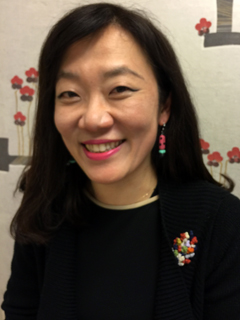Korean soft power and the art of cultural diplomacy

Sun Seung-hye
Sun, 46, was appointed to the position under the Ministry of Foreign Affairs on March 14. Popular opinion has praised Sun’s appointment as she seems to be the best person for the job.
Since her appointment, Sun has been busy going back and forth between Sejong City, Chungcheon and Seoul, her hands glued to her laptop and she maintains regular correspondence with various affiliates.
“The collaboration between the Ministry of Foreign Affairs and the Ministry of Culture, Sports and Tourism, is almost like a piece of art,” said Sun. “To foster a creative collaboration between the two in times of cultural diplomacy, I’ll have to become a strong yet flexible mediator.”
Sun earned her bachelor’s degree in aesthetics from Seoul National University and her master’s degree from the University of Tokyo. Her graduate thesis concerned utopian imagery in East Asian paintings.
She began her career as an arts and science researcher with the National Museum of Korea and later worked as a curator for the Cleveland Museum of Art in the United States. She served as an assistant professor in Sunkyunkwan University’s Academy of East Asian Studies and was the head of the arts and science research department at the Seoul Museum of Art right before she transferred to the Ministry of Foreign Affairs.
Sun also boasts an international career portfolio. In October 2004, she played an active role in the International Council of Museums held in Seoul and in 2012 she paid an important contribution to the purchase of the Korean Legation Building located in Washington D.C.
“If it wasn’t for her, we would have struggled,” said Kim Jong-kyu, the chairman of the National Trust for Cultural Heritage, who’s witnessed Sun’s remarkable performance in these two global events.
“The most interesting part of this job is that cultural diplomacy is conducted as a part of public diplomacy,” said Sun. “I was disappointed in the past to see cultural diplomacy go no further than cultural exchange. Now, however, it’s possible to see cultural diplomacy go further.” She adds, “Diplomats are artists who perform on the stage of international diplomacy. I can’t describe how happy I am to work with them.”
Sun pointed “mutual empathy” as the most appealing virtue of cultural diplomacy. It’s about being able to maximize self-actualization and the appreciation of one’s own culture by introducing it to friends of different cultural backgrounds, explained Sun.
“The cultural diplomacy I want to achieve resembles the Taeguk mark where yin and yang exist in harmony and there are no opposite extremes,” said Sun. “A diplomacy where nations can be combined into one big universe, regardless of difference in cultures or territories.”
BY JUNG JAE-SUK [shin.sooyeon@joongang.co.kr]










with the Korea JoongAng Daily
To write comments, please log in to one of the accounts.
Standards Board Policy (0/250자)